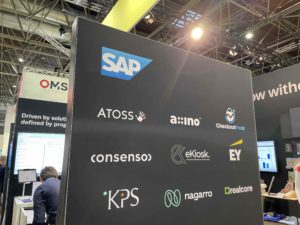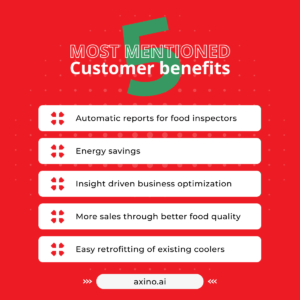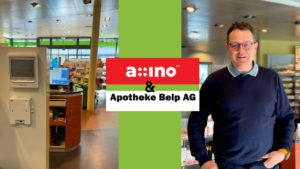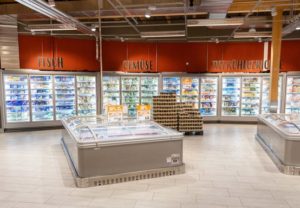Source: ZHAW
A cloud-based IoT approach for food safety and quality prediction
Safety and quality prediction are topical issues in food industry. We are developing a novel IoT approach in the framework of a collaboration with Genossenschaft Migros Zürich (GMZ), ZHAW (represented by the institutes IAS and ILGI) and Axino Solutions AG.
The main goal of the project is to provide a robust, reliable and cost-effective method for real-time monitoring of core temperatures of food products in various types of coolers employed in MIGROS shops.
Environment temperature measurements, are provided at regular time intervals by sensors positioned at specific locations in the coolers.
In real circumstances (i.e., in a MIGROS shop) core temperatures cannot be measured directly since it is not allowed to have sensors inside food items.Therefore, core temperatures have to be estimated using only environment temperatures and an appropriate mathematical model describing the physics of the cooling process. The dynamics of such complex systems cannot be described by a comprehensive physical model including all possible variables, parameters and processes.Therefore, a very general approach consists in designing conceptual models including only a selection of a few state variables and system parameters.
In this reductionist approach, dominant processes of interest are described by a physics-compliant deterministic model expressed in terms of a differential equation (ODE), while all other processes involving unpredictable and uncontrollable random events, such as interactions with customers in a crowded shop, are included in the model as noise.
Noise is expressed mathematically by a random term that has the effect of perturbing in a stochastic way the dynamics described by the deterministic part of the model. This leads in a natural way to a so-called stochastic differential equation model. For making reliable predictions, the (stochastic) model needs to be calibrated on some measured data.
In other words, model parameters need to be estimated so that the model can reproduce observations. This data-driven model calibration is called parameter inference.
Once the model parameters are duly calibrated, an adequate forward model allows us to make real-time predictions of core temperatures, given only local air temperature observations. A network of temperature sensors, appropriately installed in the coolers in a variety of different shops spread over the territory, will provide the necessary real-time temperature data. The real-time, food-specific temperature estimation is one element in a larger predictive maintenance framework, where we employ time-series analysis to identify possible cooler malfunction signs in the shops and continuously monitor the food quality.
The system shall in the end be able to detect early warning signals to deploy interventions like technical maintenance or initiate quality management actions.
Be Cool, Stay Fresh – Axino
Axino combines IoT sensor technology with patented AI algorithms to ensure freshness while reducing energy consumption. By digitizing and automating quality management process, we take the guess work out of food safety (HACCP) compliance. Learn more at www.axino.ai







